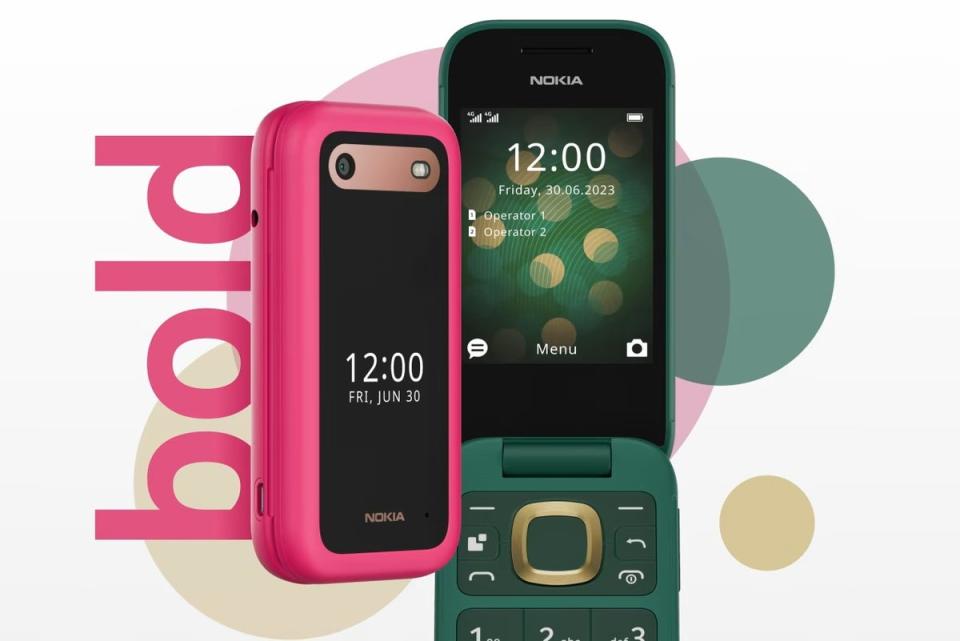Nokia launches colourful retro flip phone for digital detoxers

While most phone makers are in an ongoing arms race to up resolution, megapixel count and gigahertz, the undisputed 90s mobile king Nokia is continuing to fight a battle that most hardware makers have given up on.
The company has just unveiled two new colours for its Nokia 2660 Flip phone to celebrate the 25th anniversary of its first foray into decidedly old-school foldable tech.
Previously released last year in traditional black, blue and red shades, it’s available to buy in ‘Pop Pink’ and ‘Lush Green’ hues, so your statement on modern tech can really stand out.
The phone is about as far away from modern foldable flip phones such as the Samsung Galaxy Z Flip 4 and reimagined Motorola Razr as it’s possible to be. Only half of the unfolded handset is devoted to the 2.8-inch screen, for a start, with the other half made up of big, chunky number keys for slowly typing in SMS messages.
It has a camera, but it’s a 0.3-megapixel one — quite a way from the 50-megapixels plus standard on today’s flagship smartphones (in comparison, the Samsung Galaxy S23 Ultra has a 108-megapixel main sensor).
It is, however, significantly cheaper than your average smartphone at only £64.99. It also lasts a whole lot longer, with battery life that can be measured in days rather than hours.
And yes: it still comes with Snake (alongside Tetris and slightly more modern games such as Doodle Jump and Crossy Road.)
Dumb phones — or ‘feature phones’ as they’re less pejoratively known — eschew large touchscreens and app compatibility for a simpler life.
While they sometimes do have some social media apps and web browsers built in, they’re not exactly comfortable for extended use. They are a last resort rather than something to be used out of convenience, which suits feature-phone enthusiasts just fine.
“There’s been a surge of interest in flip phones, and we believe that the interest is coming from a need to take a break from the constant flow of incoming digital notifications, social media posts and more,” said Lars Silberbauer, HMD Global’s chief marketing officer.
“People want more simplicity, more face-to-face time, more time to think, and time to have an uninterrupted conversation.”
Perhaps surprisingly, this yearning for a simpler life isn’t entirely dominated by older generations buying feature phones out of nostalgia.
Earlier this year, the Wall Street Journal examined the phenomenon of Generation Z consumers (those aged between 10 and 28) buying more basic phones either to accompany or replace the latest iPhone or Android flagship.
Explaining her decision to become a feature phone evangelist, Sammy Palazzolo told the paper that she and her friends were concerned that they were becoming “slaves to our phones” and like “robots who keep scrolling and scrolling even when we’re out at parties”.
Ironically, Palazzolo shares her new-found enthusiasm for simple handsets on TikTok — a platform that’s extremely difficult to access on the hardware she now evangelises.

 Yahoo Sports
Yahoo Sports 